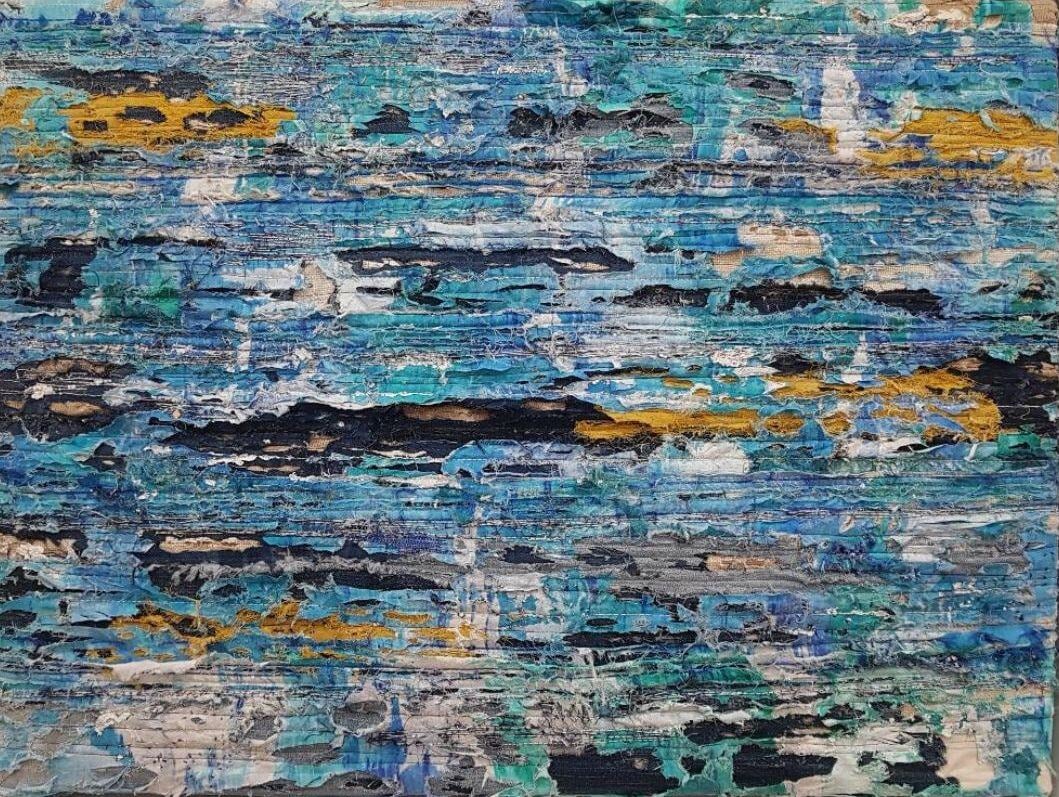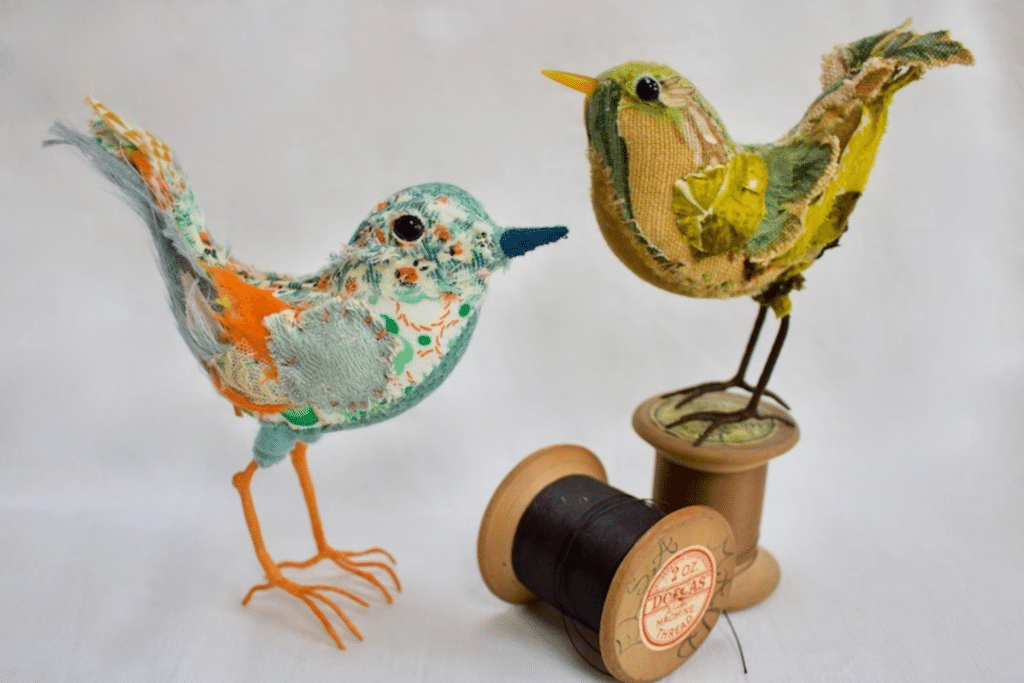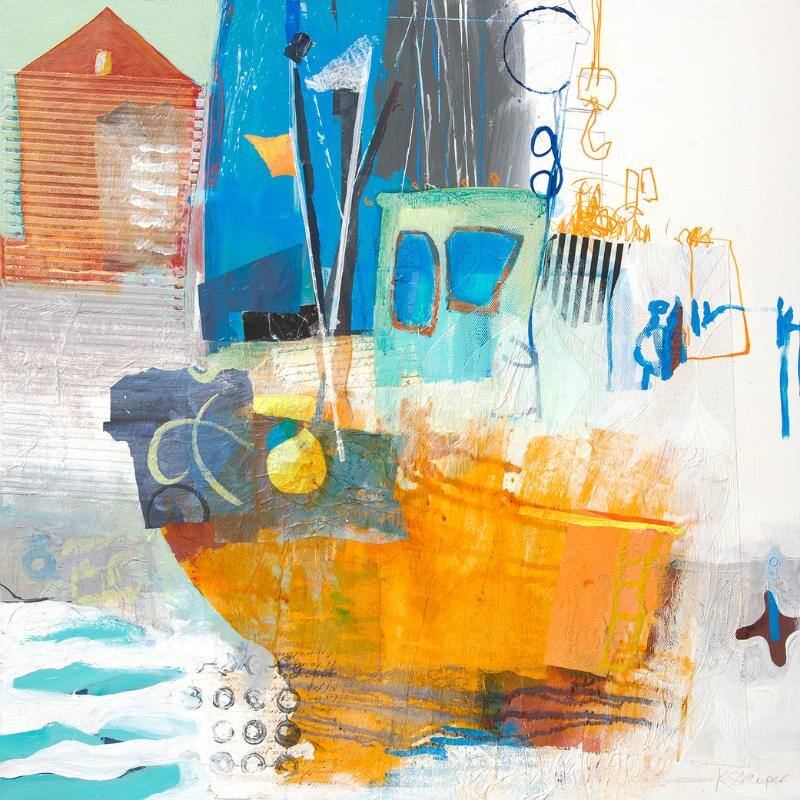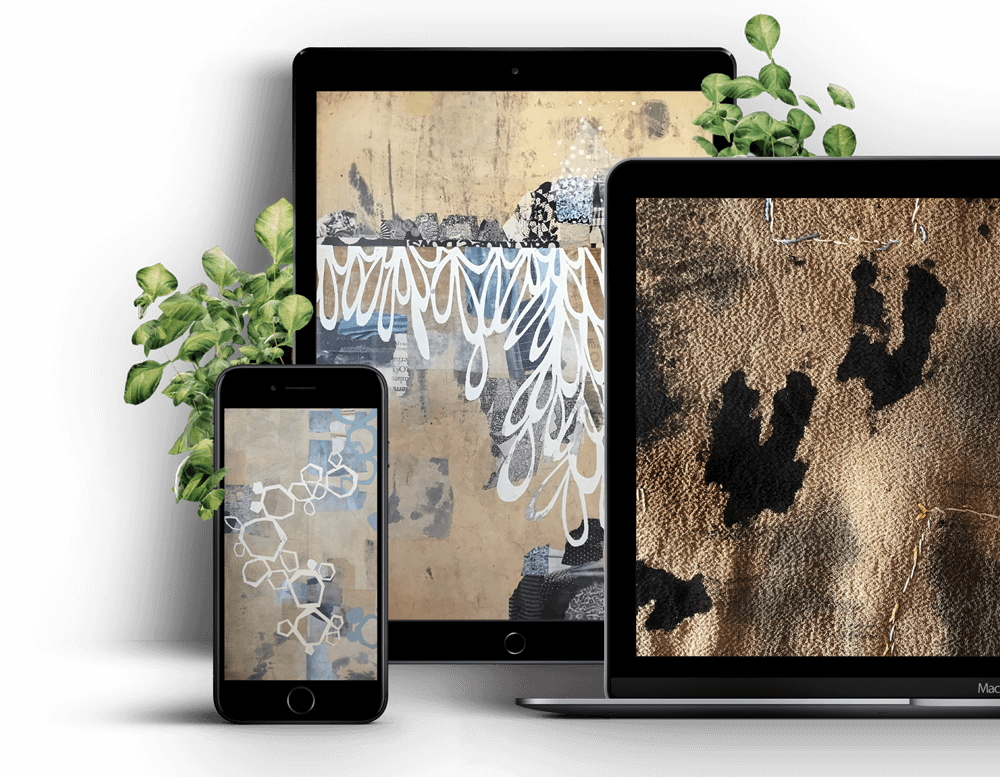Rebecca Crowell
Rebecca Crowell is a leading talent in the cold wax medium. Fibre Arts take Two talked to her about her career, her book and her teaching.
Rebecca’s Friday Feature Artist Interview can be found at the bottom of this page.
Rebecca Crowell is an artist best known for her creativity and innovation in the cold wax medium. Her inspiration comes from rugged landscapes and architectural references, where certain moments and impressions are used to capture the essence of a place, time, or feeling. Working professionally for over 30 years, her work embodies rich, complex surfaces created with cold wax and oil paint.
Rebecca has a huge love for writing and a great passion for teaching. While cold wax has been used as an additive for oil paint to alter the drying time and transparency of colour, Rebecca has experimented with the unique properties of cold wax since 2002, which has led to many advanced techniques and applications in her own work, and that of others who have followed its call.
Fibre Arts take Two was able to sit down with Rebecca to chat about her career.
Discovering cold wax
Rebecca has always been in the arts, but a chance encounter led her to her true calling. “I was at an art supply store, and the salesperson who knew I was a real sucker for art materials said, ‘Hey, did you ever try this stuff?’ And he holds up a little can of cold wax medium. I bought some, and I just started fooling around with it, and just gradually, I started to figure some things out.” Before long, Rebecca was the go-to voice for cold wax. “I started doing workshops because people started to ask about my methods.”
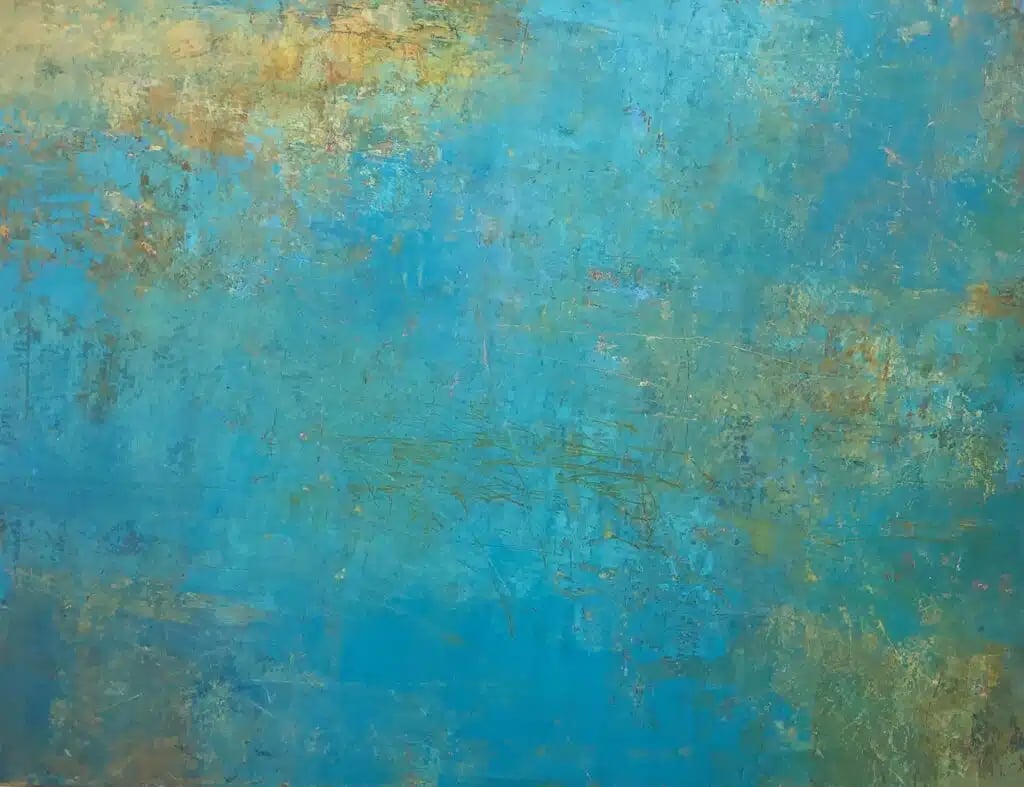
Cold wax medium techniques
With the growing reputation of Rebecca’s skills with cold wax, it was only natural that she write a book on it. “At some point, I got this email from Jerry McLaughlin. And he said, ‘Hey, I think there needs to be a book about cold wax media’. I had thought of it and talked about it with a few people, but I was busy, and it seemed like too big of a project. But here comes this guy who’s really organised. He had a whole presentation, and he laid all this out for me.
The resulting book, Cold Wax Medium Techniques, is a beautiful guide to working with cold wax that the Fibre Arts Take Two team is proud to own.
“We spent about two years writing it.” Rebecca says, “We crowdfunded the first printing, which was great because we didn’t know if there was an audience for this book, but it was overwhelming the response that we got, and we ended up with more money than we asked for. We published it early in 2017 and are now in its third printing. I guess we’ve sold about 10,000 copies at this point. It’s just been a pleasure to hear that people like it.”
Wax… and wax
Rebecca works mostly in cold wax as opposed to encaustics. Cold wax and encaustics are similar media that Rebecca feels often need differentiating. “They’re really pretty different processes. Cold wax doesn’t require any of the fusing and heating that encaustic does. Cold wax medium is really just a medium; you add it, mix it with your oil paint, about a third to a half of wax to oil and then it’s painting. Encaustic is more building surfaces. With cold wax, you don’t have a heat gun in one hand. There are no ventilation issues and no heating involved.”
Rebecca says cold wax is more like working with traditional oils but with more freedom. “With traditional oil painting, you learn you’re supposed to paint fat over lean; paints with more oil in them should go on top of leaner paints. When everything is mixed with this wax medium, which is a pasty kind of consistency, it equalises everything. You don’t have those rules; you don’t have to wait to varnish the painting because it doesn’t really need varnish. And you could just build up these beautiful layers and textures. And then also go back through the layers with solvents or with scraping and reveal that history.”
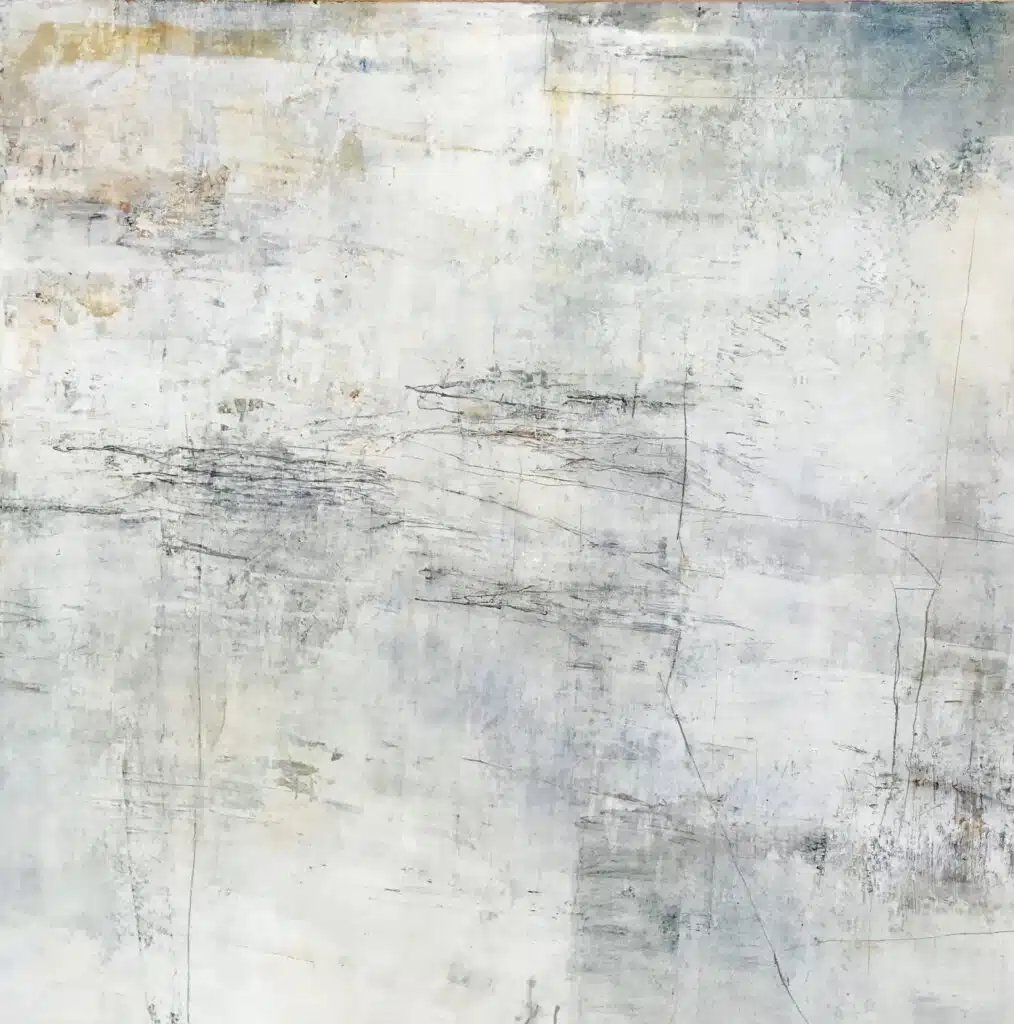
Cold Wax Academy
Last year Rebecca started a new online school with Jerry McLaughlin. “Jerry and I had this idea of online teaching at some point in the back of our minds, but COVID pushed us into it. Because we wanted to keep teaching. It became quite a process to develop how we were going to go about doing this. We really wanted to have it be curriculum-based. It’s not just random; the sessions are connected and unfold.”
The classes are available to anyone interested. “It’s a membership programme, so there are two levels, at the lower level, at the core level, you get all the sessions, and they’re all recorded. You have the live sessions every week, we have a page where people can post their paintings and get feedback, and we have some wonderful interactions with other members. Then at the highest level, the full membership, you also get streaming access to our video workshop, plus some lessons and mentoring tips from Jerry. At either membership level, you get these weekly sessions. And we go pretty deep about things, you know, we really put a lot of work into the content.”
Into abstraction
Rebecca has worked largely in abstraction throughout her career. “There’s a continuum as you get further away from something that you could point to and say, ‘that’s a landscape,’ ‘that’s a person,’ into the far end of that, pure abstraction, where you’re just focused on the visual elements for their own sakes. And in the middle, there’s a lot of different approaches that can combine emotion and memory and associations and all kinds of things.”
With the complexity and continuum of abstraction in mind, Rebecca has clear advice for aspiring artists.
“I always think intuition is important. But I think what’s also important is that you have some kind of basic approach to your work; that’s your personal experience. We talk a lot about intentions at Cold Wax Academy. But what that really means is that there’s a certain realm of ideas or things that interest you, and they’ve always interested you, things you want to explore, things you want to express. And it’s a matter of identifying what those are, and then they can be guidelines, like guardrails on the highway. You can wander around the road a bit, but there are these parameters that help you develop your work. Then, within that, you can be very spontaneous and intuitive. I think it helps you go deeper when you’re not just all over the place but have certain things that you’re more focused on.”
Self-criticism
For her final advice, Rebecca encourages artists to “have a critical eye when it comes to your own work. I think it’s absolutely an ongoing requirement that we always question and always look critically at our own work. It may sound like you’re supposed to beat yourself up about things, but I feel like you can be very critical of your own work and still be happy in the studio and feel good about what you do. It’s hard to be objective about your work, but I feel like there are standards that apply to any kind of painting in terms of, are the visual elements working. Are the design principles working? And am I saying what I want to say? And if it’s not happening, I just keep going and try not to give up on anything.”
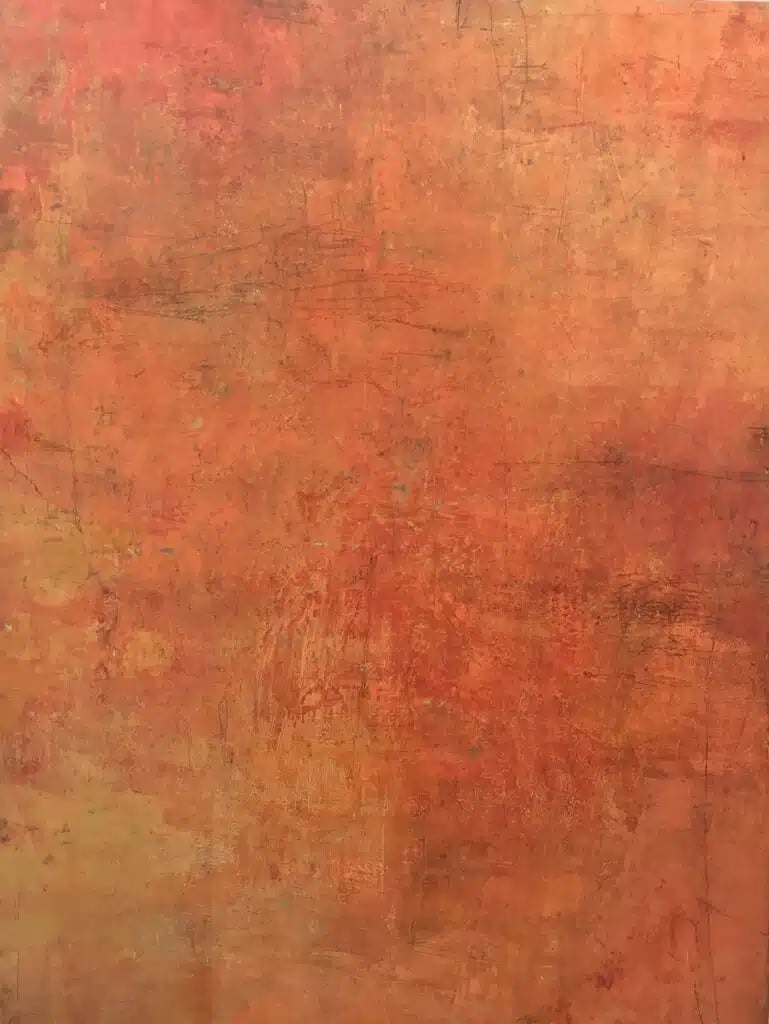
About the artist
Rebecca Crowell is an American abstract artist known for the rich, complex surfaces she creates with oil paint and cold wax medium. Her work is included in hundreds of private, public, and corporate art collections, and she regularly exhibits them in fine art galleries.
Crowell travels extensively for workshop teaching and artist residencies in the US and internationally. She is widely recognized for developing original techniques using the cold wax medium, detailed in the comprehensive book Cold Wax Medium: Techniques, Concepts & Conversations. The book she wrote with artist and colleague Jerry McLaughlin (Squeegee Press, 2017) has become a vital resource for artists worldwide. She also shares her knowledge and experience of over thirty years as a professional artist via her podcast, blog, and Cold Wax Academy, the instructional platform she co-founded in 2020 with Jerry McLaughlin.
Notifications
Join Our Newsletter
OUR YOUTUBE CHANNEL
View our interviews and more on our Youtube channel!
OUR FACEBOOK GROUP
Join our Community and stay updated with our upcoming announcements!

